
Born on June 11, 1910, in Saint-André-de-Cubzac, France, Jacques Cousteau co-invented the Aqua-Lung, a breathing device for scuba-diving, in 1943. In 1945, he started the French Navy's undersea research group. In 1951, he began going on yearly trips to explore the ocean on the Calypso. Cousteau recorded his trips on the TV series The Undersea World of Jacques Cousteau. In 1996, the Calypso sunk. Cousteau died on June 25, 1997, in Paris, France.

Early Life

Jacques-Yves Cousteau was born in the village of Saint-André-de-Cubzac, in southwestern France, on June 11, 1910. The younger of two sons born to Daniel and Elizabeth Cousteau, he suffered from stomach problems and anemia as a young child. At age 4, Cousteau learned to swim and started a lifelong fascination with water. As he entered adolescence, he showed a strong curiosity for mechanical objects and upon purchasing a movie camera, he took it apart to understand how it operated.

Jacques Cousteau's curiosity notwithstanding, he did not do well in school. At 13, He was sent to boarding school in Alsace, France. After he completed his preparatory studies, he attended Collège Stanislas in Paris and in 1930, Cousteau entered the Ecole Navale (French Naval Academy) at Brest, France. After graduation, as a gunnery officer, he joined the French Navy's information service. He took his camera long and shot many rolls of film at exotic ports-o-call in the Indian and South Pacific oceans.

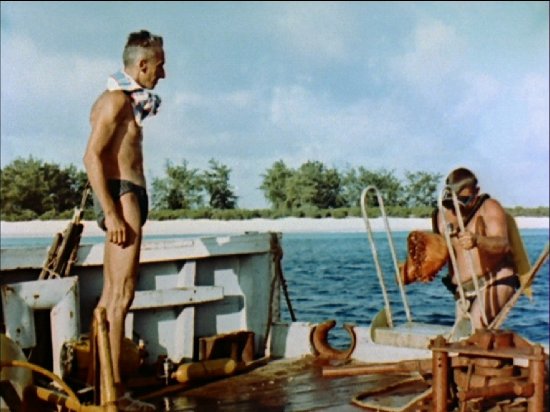
In 1933, Jacques Cousteau was in a major automobile accident that nearly took his life. During his rehabilitation, he took up daily swimming in the Mediterranean Sea. A friend, Philippe Tailliez, gave Cousteau a pair of swimming goggles, which opened him to the mysteries of the sea and began his quest to understand the underwater world. In 1937, Cousteau married Simone Melchior.
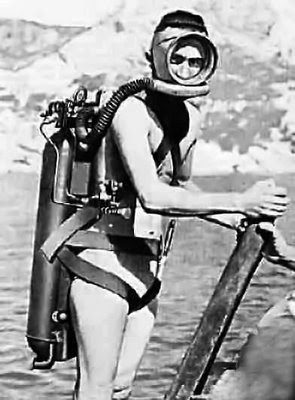

They had two sons, Jean-Michel and Phillipe. Both sons, in time, would join their father in underwater world expeditions. Simone died in 1990 and one year later, the senior Cousteau married Francine Triplet, with whom he had a daughter and son (born while Cousteau was married to Simone).

Famed Explorer

During World War II, when Paris fell to the Nazis, Jacques Cousteau and his family took refuge in the small town of Megreve, near the Swiss border. For the first few years of the war, he quietly continued his underwater experiments and explorations. In 1943 he met Emile Gagnan, a French engineer who shared his passion for discovery. Around tthis time, compressed air cylinders were invented and Cousteau and Gagnan experimented with snorkel hoses, body suits and breathing apparatus.
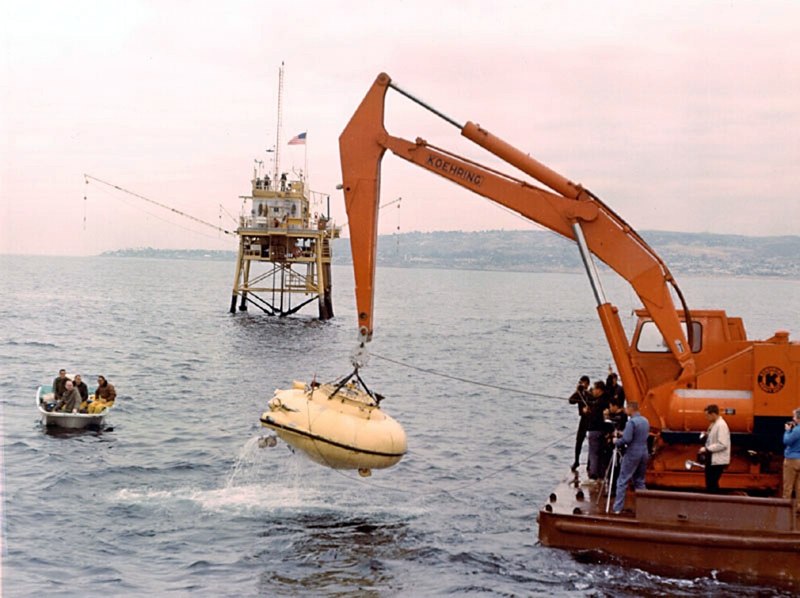




In 1948, Cousteau, along with Philippe Tailliez and expert divers and academic scientists, undertook an underwater expedition in the Mediterranean Sea to find the Roman shipwreck Mahdia. This was the first underwater archaeology operation using self-contained diving apparatus and marked the beginning of underwater archeology.


In 1950, Jacques Cousteau leased a one-time British minesweeper and converted it into an oceanographic research vessel he named Calypso.

![[Jacques-Cousteau-1947.jpg]](https://blogger.googleusercontent.com/img/b/R29vZ2xl/AVvXsEhHblstmLZml8SIFO4hCotmDqtIualE0j6pNVZWVXnH5UPHvCbNiEHzGPPOtOh0_apGlPYfR33Ml-7HDwapHgMw9UWht01EsUxI6oQeTBonyDFS9_S0biga5gPzjuTqeDDh7LoFlf11IP0/s320/Jacques-Cousteau-1947.jpg)
Literature, Cinema, TV and Later Expeditions

After struggling for financing to conduct his voyages, Cousteau soon realized he needed to attract media attention to make people aware of what he was doing and why it was so important. In 1953, he published the book The Silent World, which was later made into an award-winning film.

![[Fontaine-de-Vaucluse-1955-.jpg]](https://blogger.googleusercontent.com/img/b/R29vZ2xl/AVvXsEipiVWwK9klSei018V-JwmAjeiUfxpjJ8z2sTxwrvzkx6ajn7ougWWdtuxA_gi86K0azogtcyMb8KC01BU7-Fycti0K78yRTffRluUGiALPgvXl-5BwVsuXRWRp4wSR2qHrcDW3S0_gpeI/s320/Fontaine-de-Vaucluse-1955-.jpg)
This success allowed him to finance another expedition to the Red Sea and Indian Ocean sponsored by the French government and the National Geographic Society. During the rest of the decade, Cousteau conducted several expeditions and brought more attention to mysteries and attractions the underwater world.
In 1966, Jacques Cousteau launched his first hour-long television special, “The World of Jacques-Yves Cousteau” on the ABC television network. In 1968, he produced the television series The Undersea World of Jacques Cousteau, which ran for nine seasons. Millions of people followed Cousteau and his crew traversing the globe presenting intimate exposés of marine life and habitat. It was during this time that Cousteau began to realize how human activity was destroying the oceans.
![[Jacques-Cousteau-Emile-Gagnan-Aqua-Lung-1953-2.jpg]](https://blogger.googleusercontent.com/img/b/R29vZ2xl/AVvXsEhTxXIwbVE3jn-FsqsD_U8pWf1ybbFrTag91lOitAbRqXY7o2X_OG7rcpHvDLdT8QK7N40wQ0fe0var-bKsRa8s4yIK1kovGWh7Hx0U252sql7nV8rMvw2nPdqnKp7hj2D_MMjwSfsMrRQ/s320/Jacques-Cousteau-Emile-Gagnan-Aqua-Lung-1953-2.jpg)

Jacques Cousteau also wrote several books, including The Shark in 1970, Dolphins in 1975, and Jacques Cousteau: The Ocean World in 1985. With his increased celebrity and the support of many, Cousteau founded the Cousteau Society in 1973, in an effort to raise awareness of the ecosystems of the underwater world. The organization quickly grew and soon boasted 300,000 members worldwide.
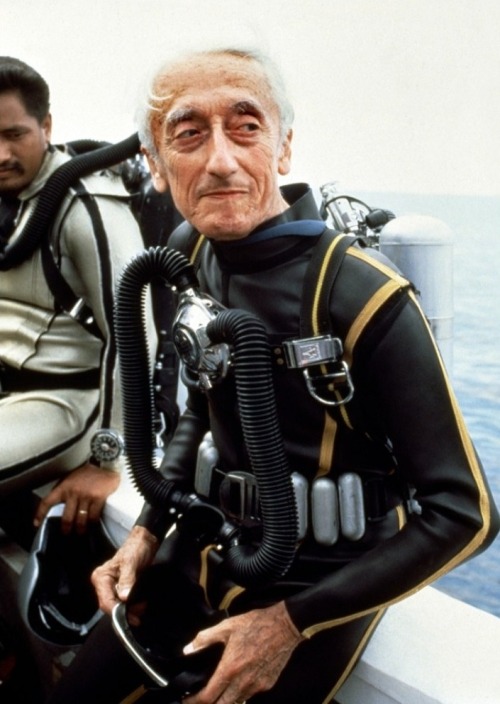

In the 1980s, Cousteau continued to produce television specials, but these had a more environmental message and a plea for stronger protection of oceanic wildlife habitat. In June 1979, tragedy struck when Cousteau's son, Philippe Cousteau, was killed in a plane crash. According to a 1979 article by The Associated Press, Philippe had been flying the plane during a test flight, and when he attempted to land, the plane clipped a sandbank and crashed into Portugal's Tagus River.


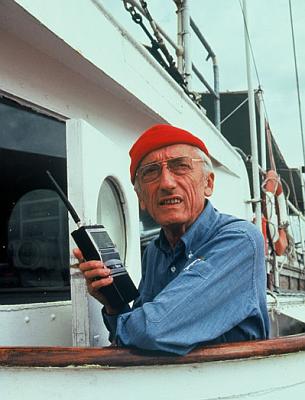
On January 8, 1996, Calypso was accidentally rammed by barge and sank in Singapore Harbor. Jacques Cousteau tried to raise money to build a new vessel, but died unexpectedly in Paris on June 25, 1997, at the age of 87. His estate and the foundation fell into dispute among his survivors. Most of the legal disputes were settled by 2000, when his son, Jean-Michel, disassociated himself from the Cousteau Society and formed his own organization the Oceans Futures Society.



![[The-Silent-World-Poster-Monde_du_Silence.jpg]](https://blogger.googleusercontent.com/img/b/R29vZ2xl/AVvXsEhU3EXbGSwQWJeGqN_dOH2ePlHxlPgp9rCUuzBPhn0ejGrSmfu2aHh0dmsJjGhCkjSVo2liARafYVI4Bj4F7_PVk_4lPuwG3TDj47MkAyRSg4KKYWxgcbpqCQQwaD1czFpmpHj9Twbz6cI/s320/The-Silent-World-Poster-Monde_du_Silence.jpg)
Taken from: Jacques Cousteau. [Internet]. 2013. The Biography Channel website. Available from: http://www.biography.com/people/jacques-cousteau-9259496 [Accessed 25 Jun 2013].

We have it, we can do much , we will provide the ip phone systems ,school pa system and voip telephone system.
ReplyDelete